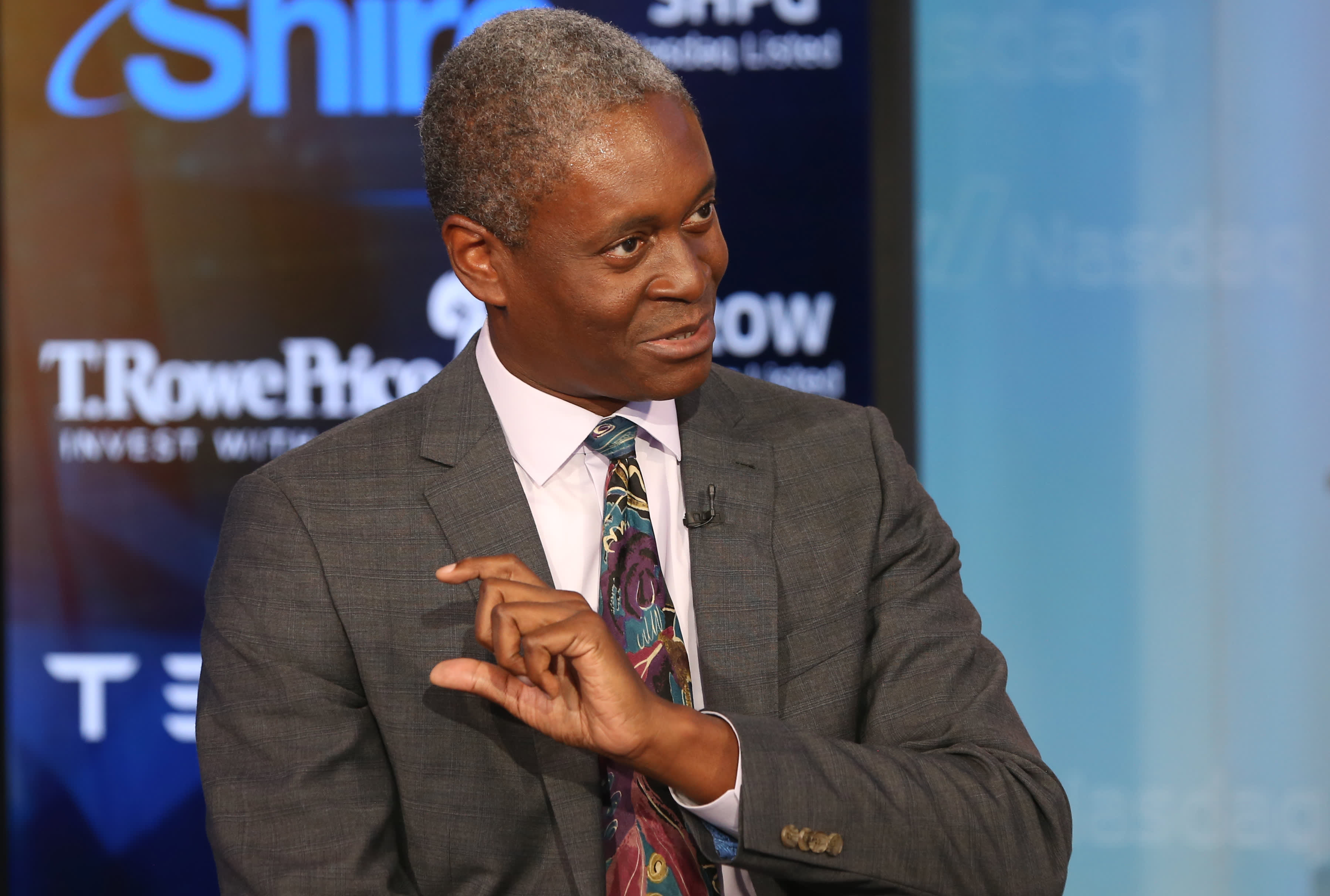Bostic says the Fed needs to do more to address racial economic impact from the pandemic

Raphael Bostic, President and CEO of the Federal Reserve Bank of Atlanta.
Cameron Costa | CNBC
The Federal Reserve has a substantial role to play in addressing the racial economic disparities brought about by the coronavirus pandemic, Raphael Bostic, president of the central bank’s Atlanta district, said Monday.
Amid a recovery that Bostic called uneven and skewed away from those most in need, the Fed is conducting “muscular outreach” to local governments to help them provide aid to their communities.
Officials have focused on helping workers avoid “benefit cliffs” in which they earn less working than they would on assistance, and have implemented workforce development programs to make sure people have the skills they need to adapt to a changing economy.
“The Fed has an important role to play. We must be central to this conversation. And increasingly, I think we are,” Bostic said in a speech to the Securities Industry and Financial Markets Association.
The current recovery looks like a “less-than” sign, Bostic said, describing uneven conditions similar to the K-shaped recovery that other economists have outlined.
Industries and workers that have been able to adapt to social distancing and generally slower conditions have been able to make it through the pandemic relatively well. Other high-contact sectors such as food service and hospitality, small retail and transportation haven’t been as fortunate.
Compounding the problem is that those types of businesses generally employ those at the lower end of the wage scale who often are minorities.
Bostic said it’s “an economic recovery that benefits some parts of the economy much less than other parts. In short, these circumstances are laying bare — and exacerbating — disparities that have long plagued our economy, along ethnic, racial, gender, geographic, and occupational lines.”
However, Bostic said he is not completely pessimistic.
There mere presence of the conversation is a bright sign, and current Fed policies can help, he said. For instance, he cited the central bank’s recent pledge not to raise interest rates until inflation averages 2% over a period of time. The new approach will stay in place even if unemployment comes down considerably, and is touted as another way the Fed can help combat the outsized pandemic impact on minorities.
“We need to participate in a deeper, more creative reckoning with a history of racial injustice that continues to weaken the economy for all of us,” Bostic said.
He added that he anticipates “it will be some time before we tighten our interest rate stance or pull back strongly from our actions supporting financial functioning” though he said that he will “heartily support the removal” of the Fed’s low rate policies and lending and liquidity programs that it has instituted during the pandemic.
“Our new approach should help minorities, women, and lower-income earners to be more fully connected to the labor market. That will give those traditionally marginalized groups a better opportunity to secure jobs and economic resilience, which for too many of our citizens has been severely tested by the COVID economic downturn,” Bostic said.




